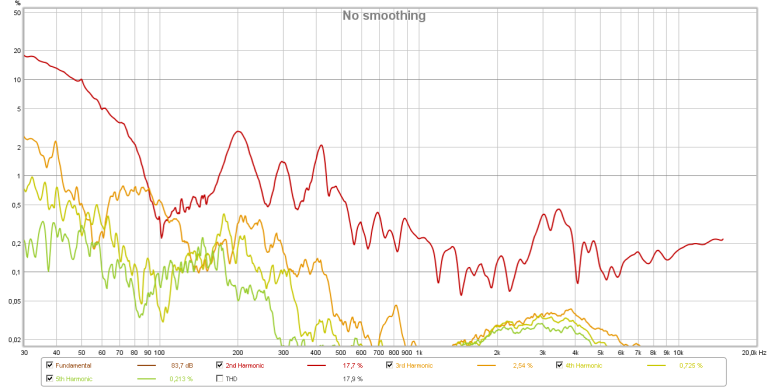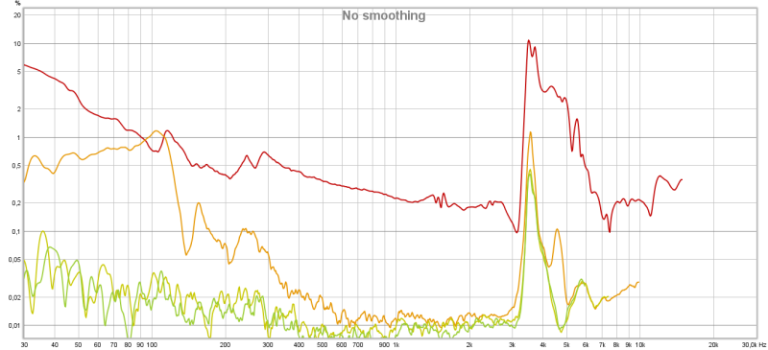I wouldn't be certain of this. That photo of this review unit with the grille on differs somewhat to the no-backplate unit measured by Rtings below (and others I've seen which look like the latter):
View attachment 100623
So I don't think it's 100% conclusive yet which version this review is of. It's not that easy to tell if there's a backplate just from a photo with the grille on really - a photo of the headphone with the grille off would be needed to be sure, which is fairly easy to do:
Now, even if this review unit doesn't have the backplate, there still remains an apparent difference in frequency response between it and most other HE400i measurements. This difference includes a dip at around 500/600 Hz which is not present in this review unit, but is in most others:
View attachment 100624
In addition to Oratory's measurements above, other measurements showing a similar dip include
Crinacle's,
Rtings',
Dekoni's,
solderdude's (2.5mm connector) etc.
This review unit also exhibits pronounced wiggles around 200-300 Hz which others don't (or have less of at least). The only exception I've seen are solderdude's measurements from 2017
of the older HE400i unit with SMC connector, which like this review unit, lacks the 600 Hz dip and exhibits a similar wiggle around 300 Hz. (2.5mm connectors is not a guarantee of no backplate by the way - there have been reports of some 2.5mm connector units with backplates. I haven't seen any SMC connector units without backplates however.)
So it could be possible that there were other driver changes (or housing or pad etc. - Hifiman are known for their
stealth revisions) not overtly noticeable that have caused this stratification into what seems like two sub-versions of the (old, not including the 2020 remake) HE400i in terms of frequency response, and as the majority of other measurements do not match the ones in this review that well, this could mean the performance (including distortion) here does not accurately represent most users' units and so experience of their headphone.
There's nothing wrong with putting forward testable hypotheses based on suggestive evidence (that's what science is all about), but extrapolating this individual (possibly less common) HE400i unit's performance even further to the HE4XX based merely on the same initial model number and a photo with the grille off? Talk about random conjecture. Especially when the actual measurement data contradicts such an extrapolation, showing they are in fact very different headphones, in the form of not only frequency response, but the HE4XX's
low distortion (measured @90dB, which Jude of Head-Fi has told me was taken on a
GRAS 45BB-12 which is more sensitive to low-level distortion and noise, in a purpose-built isolation chamber), and differing electrical and isolation measurements by the brilliant, legendary Tyll of Innerfidelity:
HE400i /
HE4XX
Voltage required to reach 90dB SPL: 0.162 /
0.271 Vrms
Impedance @ 1kHz: 45 /
49 ohms
Power Needed for 90dB SPL: 0.59 /
1.51 mW
Broadband Isolation in dB (100Hz to 10kHz): -2 /
-5 dBr


